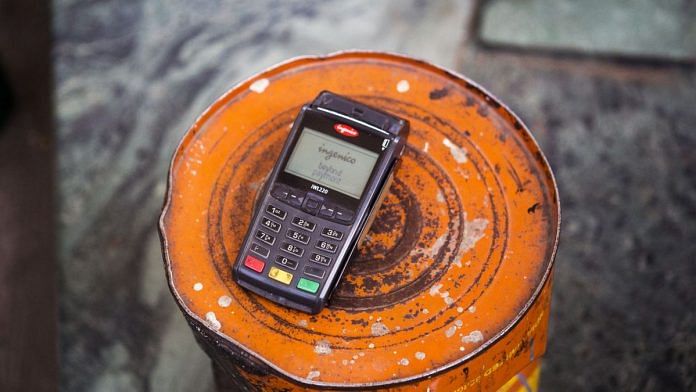Mumbai: The playing field in India’s rapidly expanding market for digital payments is poised to get more crowded as the country races to catch up with China in squeezing out the use of cash, according to the head of the South Asian nation’s payments network.
That means Indians will continue to face a bewildering array of payments apps provided by Facebook Inc., Google, Amazon.com Inc. and others, in contrast to China where two home-grown technology giants dominate the market.
“India will remain a multiple-player model where the consumer has a choice to continue to use his bank account, and for the last mile can use any app which he sees fit,” said Dilip Asbe, the chief executive officer of National Payments Corp. of India. “We give equal opportunities to both small and large players, unlike China,” he added in a recent interview.
Asbe is confident that his country’s open payments platform will eventually allow it to catch up with China, where Ant Financial’s Alipay and Tencent Holdings’ WeChat Pay are omnipresent and have sharply reduced the use of cash for payments in the past five years or so. “China is a target where we have to reach as far as digital payments are concerned,” said Asbe.
The so-called Unified Payments Interface managed by NPCI allows any firm to use an infrastructure linking all the nation’s banks to create new digital payments services quickly and cheaply. It was created three years ago as part of a drive to reduce the use of cash and bring more Indians into the financial system.
It currently houses 87 apps offered by Google, PayTM and other third parties, as well as many of the nation’s lenders. Facebook’s WhatsApp payment service remains in beta mode, pending government approvals.
Despite its open model and the multitude of competitors, India has a long way to go. Some 72% of India’s consumer transactions take place in cash, double the rate in China, according to a March report by Credit Suisse Group AG.
Many merchants, especially in rural areas, remain unable or unwilling to accept digital transactions due to network connectivity issues and a reluctance to pay charges for what are often low-value transactions.
“As a consumer I do not have the confidence to not withdraw cash, because 70% or 80% of places where I need to spend the money, digital payments are not accepted,” said Navtej Singh, the CEO of digital business at Hitachi Payment Services Ltd., which supplies automated teller machines and point-of-sale machines across the country.
In India, digital payments have climbed more than five times since 2015 to 22.4 transactions per person in the year ended March, Reserve Bank of India figures show. That’s still way below China, where cashless transactions per capita totaled 96.7 in 2017, according to an RBI report based on Bank for International Settlements data.
Despite Prime Minister Narendra Modi’s shock decision to abolish high-value notes in 2016, cash as a proportion of gross domestic product has actually been rising in the past two years, hitting a three-year high of 11.3% in the year to March 2019.
As it seeks to reverse this and move toward its Chinese target, the NPCI is focused on the volume of transactions, rather than the value, Asbe said. That’s because the key challenge is how to spread digital payments to rural India, where more than half of the country’s 1.3 billion people live and where the value of individual transactions is lower.
Asbe wants to expand the UPI’s user base five-fold over the coming five years, to 500 million people from 100 million at present, or less than 8% of the population. The target would raise the proportion to about 38%, and bring the country closer to China, where WeChat Pay alone has 800 million users.
The wide choice of payments systems and the ease with which Indians can switch between providers should allow the country to move relatively fast toward the goal, said Singh at Hitachi.
But it also makes Asbe’s task more complicated. “The challenges in addressing issues regarding awareness and infrastructure are going to be like fixing a moving train,” he said.
Also read: Banks better watch out, the fintech payment revolution is coming







Recently a relative of mine traveled to Shirdi airport from a nearby place to take a flight. As the flight was delayed she went for some snacks. She had just Rs 200 cash with her and as there was no connectivity at airport, no card machine was working, no ATM. At last she was left only with two things…… Rs. 10 and her flight ticket. So much noise PM makes about digital India with no results… no infra….. no seriosness. Just these people like to repaet on a loudspeaker about cash less India which it is becoming fast as jobless have no cash on them ….. ha ha ha !!!!!